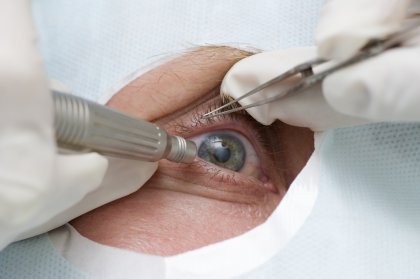- May 9, 2025
 If you have glare in daylight and you can see better on cloudy days, it means that you will be able to have a cataract. It will significantly impede normal functioning. However, cataracts can be eliminated if the cloudy lens is replaced by a new artificial lens.
If you have glare in daylight and you can see better on cloudy days, it means that you will be able to have a cataract. It will significantly impede normal functioning. However, cataracts can be eliminated if the cloudy lens is replaced by a new artificial lens.
 If the lens was not transparent, it could be seen through the pupil as a round hole in the coloured rainbow of the eye. If we look at it under the microscope, we will see that it will be built of concentrically arranged rings. Thanks to its construction, it will focus the light rays precisely on the retina. This will determine whether we will see sharply and from a distance and from close up. If something goes wrong with the lens, it starts to get cloudy and we see it worse and worse. If the turbidity is complete, we lose sight and we will only distinguish between day and night.
If the lens was not transparent, it could be seen through the pupil as a round hole in the coloured rainbow of the eye. If we look at it under the microscope, we will see that it will be built of concentrically arranged rings. Thanks to its construction, it will focus the light rays precisely on the retina. This will determine whether we will see sharply and from a distance and from close up. If something goes wrong with the lens, it starts to get cloudy and we see it worse and worse. If the turbidity is complete, we lose sight and we will only distinguish between day and night.
When is cataract surgery necessary?
The operation should be carried out as soon as we notice that a cataract is beginning to hinder our normal life. There used to be such a statement that cataract must mature and turbidity must be complete to perform the operation. At present, however, it is different and operations are performed at different stages of the disease. Currently, the procedure is a very simple matter, which is carried out in an ambulatory form and after about two hours you can already go home. If we do the treatment in hospital, we can stay there for up to 3 days. If a cataract affects both eyes, the procedure cannot be performed together, but there must be a break of several days.
In order to remove cataracts, either inbag or outbag solutions are used. The first method is to remove the lens together with the bag in which it is placed. If you want to see well then you have to wear glasses and glasses with high power, so this method is rarely used nowadays. Nowadays, the extracorporeal method and the modern phacoemulsification version are much more frequently used.
How does cataract surgery take place?
Eye anesthesia can be done with special drops and then the support buckles are put on the eyelids. The incision will not exceed 4 mm and is made on the side of the eyeball. With the help of ultrasounds, the nucleus of the lens is broken down, so that it is possible to remove it. A new lens made of silicone or hydrogel is then introduced into the eye through this notch that has been made. Thanks to the use of special ears, such a lens will be able to stabilize its position better. It can be soft and elastic and is therefore often rolled up, making it easier to slide it into a bag that has been removed from the natural lens. Once it has been introduced, the surgeon straightens it and sets it in the correct position for the natural lens. Finally, a dressing should be applied to the eye.
After cataract surgery
 An artificial lens does not have the ability to accomodate, so after such a procedure you have to wear one pair of glasses, but usually its power does not have to be so big. It is precisely defined already during the preparation for the procedure what glasses will be needed by a given patient. There are also no contraindications to use contact lenses in such a situation.
An artificial lens does not have the ability to accomodate, so after such a procedure you have to wear one pair of glasses, but usually its power does not have to be so big. It is precisely defined already during the preparation for the procedure what glasses will be needed by a given patient. There are also no contraindications to use contact lenses in such a situation.
During the first days, the medical check-up is daily and will then be performed every few weeks. For one day you need to wear a dressing, then put it on overnight and when you want to go outside to protect your eye. It must not be touched so as not to lead to infection.